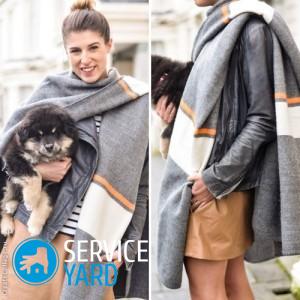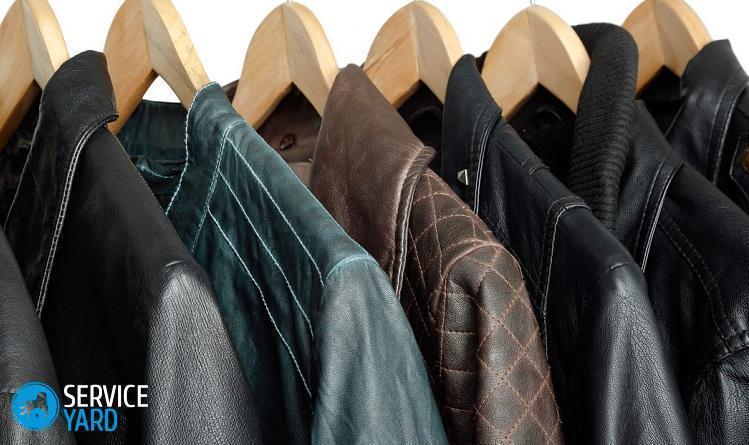How to sew a leather jacket with your own hands?

Can I sew a leather jacket with my own hands? The answer is simple - yes, of course! In order to do this correctly, you will need to follow the step-by-step instructions and recommendations. Another thing to remember: only experienced seamstresses work with the skin. If you are new to cutting and sewing, then first practice tailoring a jacket from a more pliable material, such as raincoat fabric. So, if you are a professional and you are interested in the question of how to sew a leather jacket with your own hands, then our article is exactly what you need. We will tell you how to work with this organic material, so that its wonderful properties provide your product with an excellent fit, chic, comfort and versatility.
to contents ↑How to sew a leather jacket?
Sewing a leather jacket is not so difficult as it seems at first glance. Yes, of course, genuine leather is moody in processing and has a number of features, but it feels great in the skilled hands of a needlewoman. The entire process of sewing leather outerwear consists of several stages, which should be performed in strict sequence. Let's get to know them.
Preparatory work:
- We determine the material. This must be done in the first place, since there are a lot of varieties of genuine leather. You should well understand that the type of this material is directly dependent on the method of dressing, that is, processing. Modern production allows you to get skin of various quality, dense and elastic, natural and color shades.
Important! We recommend taking goat skins for work, which are distinguished by their softness and thin structure.
- Determine the color. Of course, you choose your own skin color. You can choose the classic colors: white, black, brown. For the most ordinary women of fashion, brighter shades are perfect: red, blue, green, purple or orange. Perhaps you will wear clothes of a certain color under a sewn jacket? Then stop at the universal color.
- We make a pattern of a leather product. The whole process of sewing outerwear simply cannot happen without a pre-prepared pattern with a detailed drawing of all the details. Ready-made patterns can be easily found on the Internet, look at fashion designers (if access allows) or draw on your own. It will not be superfluous to go around branded stores and see the latest collections of the current season. And by adding personal wishes and adjustments, you will do a thing that no one will have.
- We determine the amount of material needed. To understand how much material is needed to sew a leather jacket, you need to prepare a pattern in advance taking into account all the features: style, decorative details, the size of your figure. You will need all these details to lay them on the skins in the store. So it will be easier for you to understand how much skin the entire product will take. When buying the necessary cut, do not forget to take into account additional details that you will also need: stitching, fitting, bottom collar and others.
Important! Lay out patterns as economically as possible on the skin so that the material consumption is minimal.
Materials and tools:
- Genuine leather cut (color and length to choose from).
- Zipper.
- Non-woven.
- Paper for building patterns.
- Threads in tone.
- Thick needle.
- Sharp scissors.
- Machine needles for skins.
- Tape measure.
- Long ruler.
- Chalk, ballpoint pen.
- Sewing machine.
Manufacturing technique
So, we came to the most important question: how to sew a jacket from leather with our own hands quickly and easily? Let's look at a step-by-step master class on its manufacture:
- Transfer the previously prepared pattern to the wrong side of the material. The usual pen will help us with this, which you need to draw only on the inside of the skins. We mark with chalk all the delicate places that we will use for the lower part of the product. Do not forget that genuine leather stretches more in the transverse direction than in the longitudinal one. We cut paired details in one direction of the material texture. We attach the pattern with adhesive tape and mark the contours with a pen.
- We cut the back, the front parts of the product, paired parts (two front and two rear) sleeves, two parts of the bottom finish of the sleeve, paired parts for the stand, collar and pockets and at the end - one part for tailoring the neck.
- We take for a lining a dense interlining, from which we cut out all the necessary linings.
- We sew the side and shoulder parts of the future product. The places that were left for the allowances are distributed to the sides in the direction from the seams, and then glued with non-woven. We turn off the top edge of the pockets on the wrong side, and after that we sew it on a typewriter. Again, we now turn off the allowances of the pockets and glue them using the same technology as the previous seams. We put pockets on the desired places of the jacket and sew.
- We pass the iron along the folds in the lower sections of the back, front and sleeves. We cover all the previously listed details. We sew the sleeves, and then we sew them into the armholes to stitch them along these laid seams. Sew the neck and collar, which we sew from the outside of the product. Sew the lining to the upper finishing stitch, and then sew the fastener.
The work is over. Leather jacket is ready to go out!
to contents ↑Important! You can decorate leather outerwear with various decorative elements: beads, beads, applique with embroidery, lace and much more.
General recommendations
Before you sew a leather jacket, it is advisable to familiarize yourself with the basic tips to understand the features of working with genuine leather, which can facilitate the technique of sewing your product:
- Do not basting with a needle on a leather canvas. Why? Yes, because the needle will leave holes after itself. For fastening parts, you can use various clamps or glue “Moment”.
- Remember that a laid seam is almost impossible to fix. Therefore, before making a machine line, make sure several times that the work performed is correct.
- Before cutting parts from the pattern, check all marked dimensions and the desired shape of the pattern.
- Due to the fact that the material has different thickness and elasticity, the patterns for the product require careful study. In any case, different areas will be on the same leather sheet. That is why the layout of the patterns should take into account all the properties of the material.
- It is better to transfer the pattern of parts first to a dense fabric, and then to the skin. This will allow you to change the shape of the jacket and make personal adjustments to the product.
- To sew a leather product, you will need a special machine with triple web advancement, which will provide excellent fixation and timely supply of parts when sewing.
- If you use material that has already been in use for making a jacket, then circle the area of holes, scuffs, incomplete painting, marriage, and so on with chalk. These details must be used for invisible internal parts, which will not be as noticeable as external (front) ones. Here you can also use skins sewn from several shreds due to lack of material.
- The area along the ridge of the animal is the strongest part of genuine leather.From these segments, it is desirable to cut parts for the greatest load on the product. But from the delicate abdominal area of the skin, we recommend cutting small details for decoration due to the minimum load.
- Due to the fact that the skin is an elastic material, it must be duplicated to avoid stretching during wear. For this, dense non-woven, glue-based doubler, suitable for leather and fur, are perfect.
- In order to give volume to the details of the jacket in the desired places, glue the material with special hot-melt foam, and then follow the stitching.
- Do not forget that the entire product is turned out through one hole left in one sleeve. After performing the above steps, you will need to sew it manually.
- To connect the jacket with the lining should always start with the sleeves: sew the lining of the sleeve along its lower edge, and then on the bottom of the product, neck and details of the fit.
How to care for a leather jacket?
Leather is not such a simple material, it requires special care. Having spent very little time studying our recommendations, you will extend the life of your leather jacket by several years or more:
- Iron the leather product only on the wrong side with a well-heated iron with no steaming function. Try these steps first on a small patch, and then proceed to the main area of leather outerwear.
- Treat your skin with a special waterproof and waterproofing agent. Before making a purchase, carefully read the contents of the protection. So, silicone or acrylic sprays retain an attractive appearance and give shine to the material. But products based on wax and grease have excellent protective properties, but they have several big drawbacks: they can change the color, luster, smell and wear resistance of a leather product.
Important! To obtain a positive result, all the funds listed must be applied once a month, or even more.
- Do not wash the leather jacket by hand or in the washing machine. Take it better to dry cleaning, to the professionals in their field.
- It is useful to apply a special conditioner to leather clothes, which will restore the fat balance of the material, prevent cracks. Remember one rule: you need to use this air conditioner only when the jacket has become dry and rough to the touch. Do not apply a large amount of oil so as not to clog pores and reduce the attractive appearance and further life of the leather jacket
- In damp and windy weather, salt spots may form on the leather product. This is a normal skin reaction to similar weather conditions. In order to avoid the appearance of dry cracks and stains, wipe off the deposits formed with a damp piece of fabric, leave the clothes to dry, and then apply a protective conditioner.
- Any wet leather product should only dry naturally. So, wet clothes need to be hung on a hanger, having previously removed all objects from pockets so as not to stretch wet material. Never dry genuine leather clothes on radiators or near a fire source - this will only aggravate the situation.
- Keep the jacket in a closet on a soft hanger to minimize the appearance of wrinkles, cracks and stretch marks on the skin.
Stock footage
As you can see, sewing a leather jacket with your own hands is not so difficult as it seems at first glance, if you have experience in this needlework. Genuine leather is not only noble, but also durable. Any leather jacket can be combined with absolutely any things and shoes. We wish you success!
- How to choose a vacuum cleaner taking into account the characteristics of the house and coatings?
- What to look for when choosing a water delivery
- How to quickly create comfort at home - tips for housewives
- How to choose the perfect TV - useful tips
- What to look for when choosing blinds
- What should be running shoes?
- What useful things can you buy in a hardware store
- Iphone 11 pro max review
- Than iPhone is better than Android smartphones




